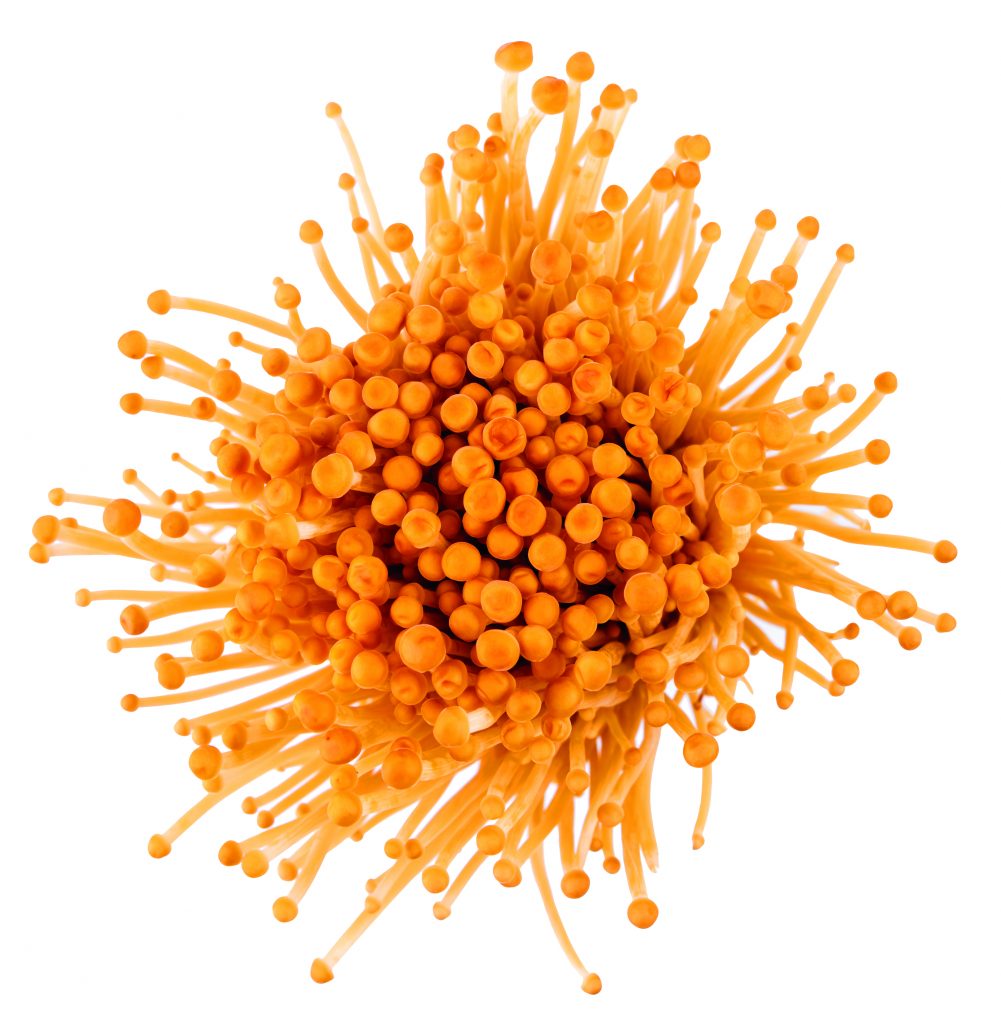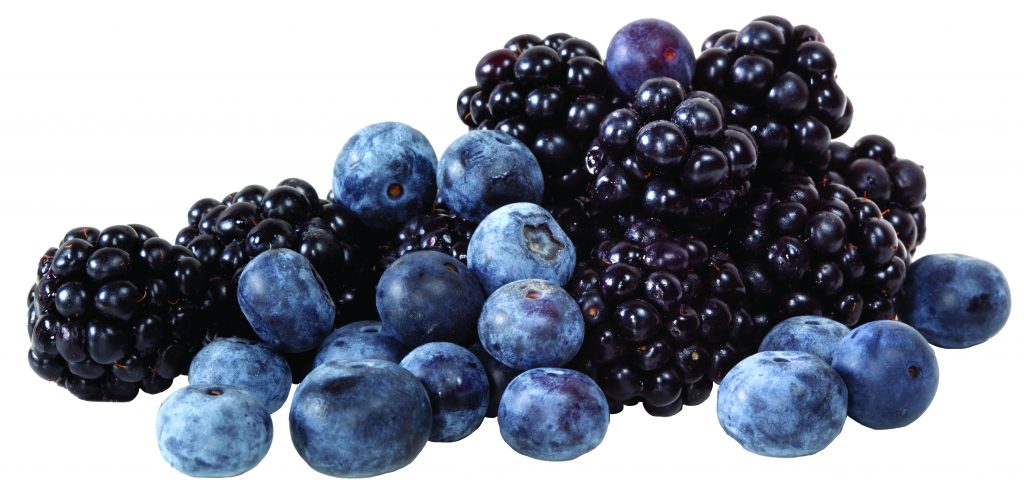Food as Medicine for a New Era of Wellbeing
AI helps researchers recognize, understand and exploit plant-based bioactive chemicals that promote human health and longevity. Some call it “food as medicine,” and it may be the biggest dietary news since the discovery of vitamins.

Our ancient ancestors figured out what to eat long before the dawn of recorded history. In every culture and in every corner of the world, tribal savants knew some foods promoted good health and a few even had the power to heal.
But what made these beneficial foods special? If the inquiring minds of long ago had possessed the technology to accurately add up all the components of a plant, they would have discovered the stalks, leaves, roots, flowers, fruits, seeds—and everything else we can see with the naked eye—doesn’t quite equal 100% of the plant. The world’s flora also contains something else—something seemingly invisible.
Yet, only lately has the mystery of what’s unseen begun to unravel. Our understanding increased profoundly over the first half of the 20th century as science discovered the 13 essential vitamins—the first in 1913 and the last in 1948. Making quick progress, companies were turning some vitamins into consumer products by 1935. By the late ’50s, vitamin pills had become commonplace in American households and were ingrained in the national psyche.
Now, another period of discovery is upon us, but it’s moving more quickly than the vitamin revolution and may prove at least as momentous. Artificial intelligence is helping scientists unlock the secrets of compounds often known by the catchy marketing-oriented name “bioactives.” They’re also called more scientific names, like “phytochemicals,” “phytonutrients” or “bioactive phytonutrients.” Ultimately, the public may come to know them as “functional ingredients.” For simplicity, let’s stick with the name “bioactives” for now.
Fraught nomenclature aside, we’re talking about chemical compounds that come from plants and produce biological activity in humans, says Jed Fahey, a nutritional biochemist who’s logged nearly three decades on the faculty at the Johns Hopkins University Medical School. The biological activity can take the form of better sleep, a stronger immune system, reduced inflammation or other benefits. Maybe someday they’ll cure cancer, experts say. Some think of it as “food as medicine.”
“New technologies have allowed the proper identification of a whole slew of compounds that have always been in these plants,” Fahey notes, citing advances in laboratory tools with names like mass spectroscopy and nuclear magnetic resonance spectroscopy.
Every living organism—plants, fungi, animals and humans—produces the compounds, but they earn the name bioactives only when they affect humans, according to Jim Flatt, a scientist who serves as CEO of Brightseed. It’s a privately held company that’s beginning to extract bioactives from plants and then supply them to other firms to use in processed food, dietary supplements and pharmaceuticals.
Everything alive, including plants, animals and humans, generates phytochemicals. But they’re called bioactives only when they’re made by plants and can benefit humans. Plants develop them for their own survival, says Katie Stebbins, executive director of The Food & Nutrition Innovation Institute at Tufts University.
Plants rely on the compounds for survival because they perform all sorts of functions, Stebbins observes, citing the examples of attracting pollinators, poisoning herbivores, and repelling rot and insects. She likens the evolution of those characteristics to the process of humans developing arms and legs to sustain themselves.
“Bioactives are a really beautiful, amazing part of nature,” Stebbins says.
Eating plants that contain those beautiful bioactives is good for people, but extracting the bioactives and consuming them in more concentrated form can do even more to treat or prevent illness, according to Leena Pradhan-Nabzdyk, a professor of surgery at Harvard and CEO of Canomiks, a bioactives-related company.
“We truly believe in our vision of ‘food as medicine,’” Pradhan-Nabzdyk says of her company’s slogan.
The word “medicine” is key because just eating well won’t provide enough bioactives, agrees Snigdha Guha, a postdoctoral scholar in molecular biology at the University of California at Davis.
“According to my calculations, you need to be eating two kilograms of beans every day, which is an insane amount,” she notes.
At any rate, companies and academics are contributing to research that experts are convinced will realize their vision of better health through bioactives, and they’re learning more about these beneficial compounds at a furious pace.
An explosion of knowledge
Twenty years ago, the consensus at a meeting of the Phytochemical Society of America was that there were about 50,000 phytochemical compounds in all of nature, and only a few would qualify as bioactives, recalls Fahey. Ten years ago, researchers were making the educated guess that science would someday discover hundreds of thousands of phytochemicals, he says.
Today, researchers estimate the plant kingdom may produce upward of 10 million phytochemical compounds, Flatt asserts. Brightseed, where Fahey and Stebbins serve in a coalition of expert advisors, has now isolated and studied 4 million of them and found about 30,000, or 1%, may qualify as bioactive.
How have the numbers grown so prodigiously? It’s thanks partly to the computational power of artificial intelligence, according to just about everyone who spoke with Luckbox for this article. At Brightseed, that technological leap has occurred with the help of a platform the company calls Forager.
About 30,000 plant species have been used in one place or another for food or as medicine, and the company has collected and profiled more than 2,000 of them, Flatt says. Researchers analyze slices of the plants and feed the data into Forager.
When Forager detects previously undiscovered compounds in those slices, it compares their properties with a database of knowledge about how the body works. When there’s a match—in other words, the compound appears likely to have a beneficial effect on humans—the testing begins.
If laboratory studies verify the compound might qualify as a bioactive that’s good for people, they’re then tested on humans, Flatt says.
“Oftentimes, we’re able to characterize 10 times or more the number of bioactives that have been characterized previously for many given plant sources,” he says, “and through AI [we can] predict with decent accuracy their role in health.”
Forager has significantly shortened the time needed for the discovery process, enabling the company to lower costs, compared with old trial-and-error methods, Flatt continues.
Brightseed is using Forager to help companies bring bioactives-enriched products to the public as early as next year. Among those firms are Pharmavite, a dietary supplements company owned by Otsuka Pharmaceutical (OTSKF); Kallyope, a privately held pharmaceuticals company that concentrates on the “gut-brain axis” and has plans to go public; and Nutriquest, a privately held supplier of livestock feed and nutrients.
Another company, Canomiks, uses its platform differently from Brightseed, employing it in three ways, says Pradhan-Nabzdyk, the CEO.
First, Canomiks provides other companies with product validation. It uses human cells in tests to determine which ingredients in a formulation are achieving the desired results. The researchers contend with a lot of variables—the characteristics of compounds from plants change from one batch to the next because of weather, soil type and lots of other factors.
Second, the company is using National Science Foundation funds to test products and issue a “CanTRUST by Canomiks” seal of approval to certify a product’s effectiveness and consistency from one shipment to another. The seal may begin appearing on consumer products next year, Pradhan-Nabzdyk says.
Third, the company is in discussions with customers to help them improve the formulations of their products.
So, companies like Canomiks and Brightseed are furthering the science of bioactives, but much remains to be done to counteract the mistakes of the past.

Restoring nature’s bioactives
For the last century or so, plant breeders have been modifying fruits, vegetables and grain to increase yield; boost resistance to insects, bacteria and fungus; intensify sweetness; and induce them to mature at a uniform rate to facilitate harvest, Fahey says. Recently, genetic modification has amplified the trend.
“If you taste some heirloom tomatoes or some heirloom apples, they’re not as sugary sweet as a modern Gala or Delicious,” he notes by way of example.
Selective breeding has caused the bioactive content of plants to decline simply because there’s been little or no attempt to increase or even maintain it, Fahey says.
What’s more, agricultural practices like spraying crops with pesticide have reduced the need for plants to develop their own defenses and have thus caused bioactives to decline, he continues.
Food processors squeeze out most of the remaining bioactives by exposing what we eat to heat and extrusion, Fahey notes. Then they lace their products with harmful but inexpensive sugar, oils and salt.
For the last 20 years, Americans have been eating more of the processed food that causes inflammation and is associated with maladies that include diabetes, Alzheimer’s, Crohn’s disease and various cancers, Fahey says.
“Americans are going to have one, two, three, four or even five concurrent chronic conditions by the time we bite the dust,” he maintains, “and they’re making our quality of life worse and worse. Ultra-processed foods are killing us—there’s no question about it.”
While awaiting what many anticipate will be a restoration of bioactives in the American diet, Fahey advises consumers to improve their health by choosing organic produce that hasn’t been robbed of potential bioactives. He also recommends limiting consumption of the boxed foods with lengthy shelf life that occupy the center of the supermarket. Instead, we should choose the produce, meat and dairy offerings on the store periphery.
Flatt agrees, noting that “we don’t consume any more calories as a population than we did 30 years ago, and yet obesity continues to increase, not just in the U.S., but globally. And most of that is attributed to removing bioactives and fibers in making shelf-stable foods. So, this is why the scientific community is really embracing the concept of bioactives.”

Subscribe for free at getluckbox.com.
For daily financial market news and commentary, visit the News & Insights page at tastylive or the YouTube channels tastylive (for options traders), and tastyliveTrending for stocks, futures, forex & macro.
Trade with a better broker, open a tastytrade account today. tastylive, Inc. and tastytrade, Inc. are separate but affiliated companies.


